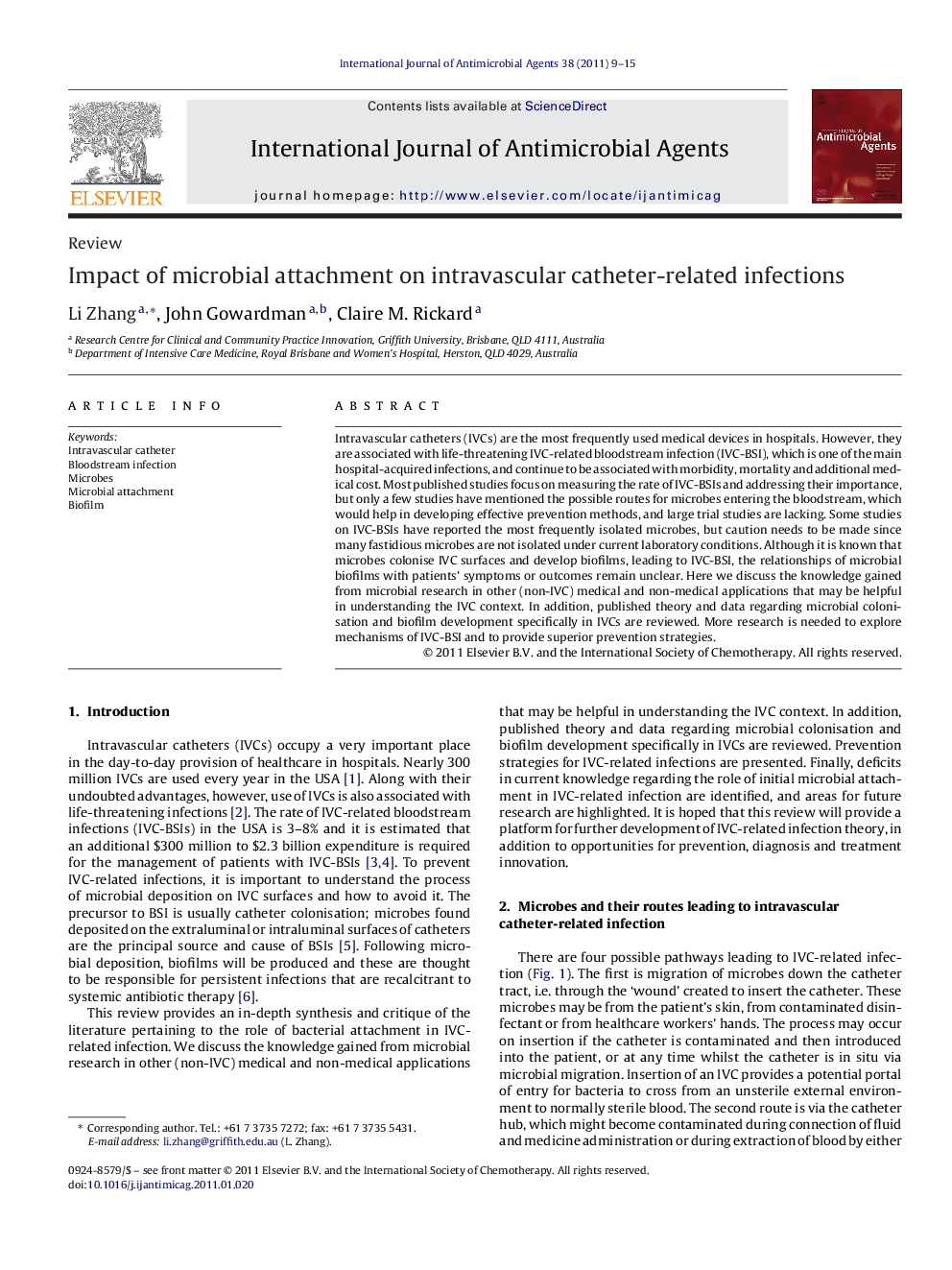| Article ID | Journal | Published Year | Pages | File Type |
|---|---|---|---|---|
| 6118345 | International Journal of Antimicrobial Agents | 2011 | 7 Pages |
Abstract
Intravascular catheters (IVCs) are the most frequently used medical devices in hospitals. However, they are associated with life-threatening IVC-related bloodstream infection (IVC-BSI), which is one of the main hospital-acquired infections, and continue to be associated with morbidity, mortality and additional medical cost. Most published studies focus on measuring the rate of IVC-BSIs and addressing their importance, but only a few studies have mentioned the possible routes for microbes entering the bloodstream, which would help in developing effective prevention methods, and large trial studies are lacking. Some studies on IVC-BSIs have reported the most frequently isolated microbes, but caution needs to be made since many fastidious microbes are not isolated under current laboratory conditions. Although it is known that microbes colonise IVC surfaces and develop biofilms, leading to IVC-BSI, the relationships of microbial biofilms with patients' symptoms or outcomes remain unclear. Here we discuss the knowledge gained from microbial research in other (non-IVC) medical and non-medical applications that may be helpful in understanding the IVC context. In addition, published theory and data regarding microbial colonisation and biofilm development specifically in IVCs are reviewed. More research is needed to explore mechanisms of IVC-BSI and to provide superior prevention strategies.
Related Topics
Life Sciences
Immunology and Microbiology
Applied Microbiology and Biotechnology
Authors
Li Zhang, John Gowardman, Claire M. Rickard,
